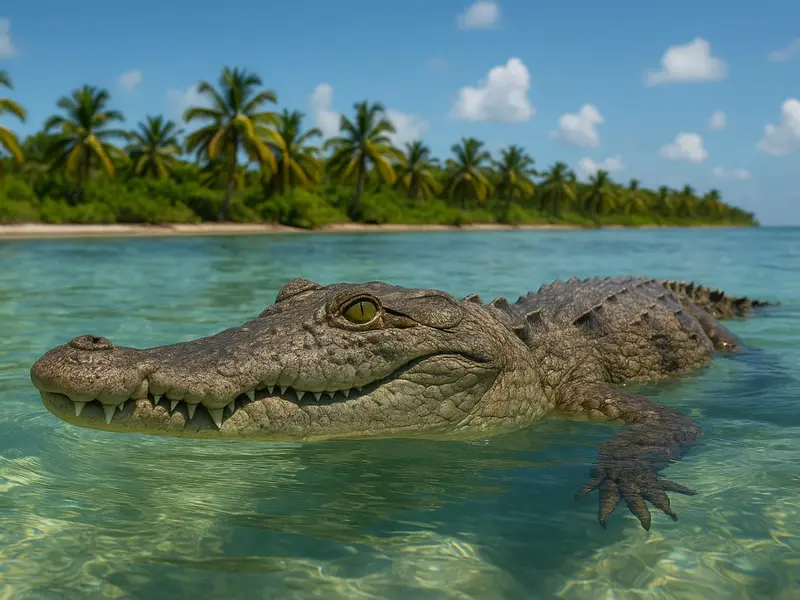Mexico City — In a groundbreaking discovery, researchers have identified two previously unknown species of crocodiles living off the Yucatán Peninsula—one on Cozumel Island and the other on the Banco Chinchorro atoll. This revelation, published in the journal Molecular Phylogenetics and Evolution, challenges long-standing assumptions about the widespread American crocodile (Crocodylus acutus) and underscores the urgent need for more targeted conservation efforts.
A Hidden Diversity Revealed
Led by Hans Larsson, a biology professor at McGill University, the international research team set out to uncover the true genetic diversity of crocodile populations in isolated island environments. By analyzing genetic sequences from crocodiles in Cozumel, Banco Chinchorro, and mainland areas across the Caribbean, Central America, and Mexico’s Pacific coast, they made a surprising discovery: these island populations showed high levels of genetic differentiation, enough to qualify as distinct species.
“These results were completely unexpected,” said José Ávila-Cervantes, former McGill graduate student and lead author of the study. “We assumed Crocodylus acutus was a single species ranging from Baja California to Venezuela. Our study is the first to comprehensively explore genomic and anatomical variation in these animals.”
While the two newly identified species have not yet been formally named—a process that requires additional taxonomic work—the genetic evidence makes it clear they are separate from the American crocodile previously thought to dominate the region.

Why It Matters: A Conservation Imperative
The discovery carries significant conservation implications. Both new species exist in small, isolated populations, with fewer than 1,000 breeding individuals each. Though currently considered stable, these populations are highly vulnerable to threats like habitat loss, climate change, and unchecked coastal development.
“Biodiversity is disappearing faster than we can figure out what we’re losing,” said Larsson. “Recognizing these crocodiles as distinct species allows us to focus conservation efforts where they are most needed.”
Both Cozumel and Banco Chinchorro are ecologically sensitive regions:
- Banco Chinchorro, declared a Biosphere Reserve in 1996, forms part of the Mesoamerican Reef System, the second-largest coral reef in the world.
- Cozumel is home to multiple endemic species and faces increasing pressure from urbanization and mass tourism.
This discovery highlights the need for localized conservation plans, particularly for island ecosystems with high endemism.
Broader Conservation Challenges
According to the International Union for Conservation of Nature (IUCN), the American crocodile (Crocodylus acutus) is currently listed as “Vulnerable.” However, with these new species splitting off from the original classification, it’s likely that the conservation status of these newly identified populations will need to be reassessed—potentially placing them in even more critical categories.
The research emphasizes several urgent conservation priorities:
- Protecting coastal habitats from urban sprawl and tourism infrastructure.
- Enforcing legal protections specifically for genetically distinct island populations.
- Expanding genetic monitoring programs to better understand small, isolated animal populations.
- Educating communities and tourists about the importance of preserving these lesser-known species.
A Bigger Picture for Biodiversity
Mexico is recognized as one of the most biodiverse countries in the world. This discovery not only adds to the richness of Mexico’s wildlife but also serves as a reminder that many species remain hidden—and vulnerable—especially in ecosystems under constant human pressure.
“The rapid loss of biodiversity can only be slowed if we know what we’re losing and where,” Larsson emphasized. “Now that we know, protecting the habitats of these remarkable crocodiles must be a priority.”
As scientists work toward formally naming these new crocodile species, conservationists hope this discovery will spark renewed efforts to protect the fragile ecosystems of Cozumel, Banco Chinchorro, and beyond.
Discover more from Riviera Maya News & Events
Subscribe to get the latest posts sent to your email.
